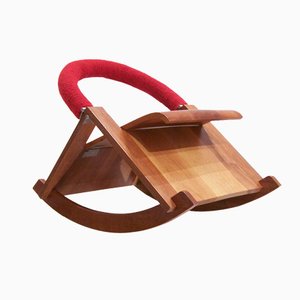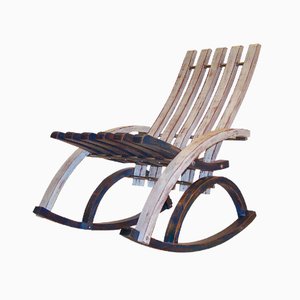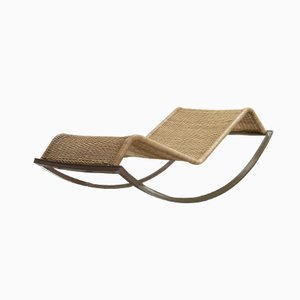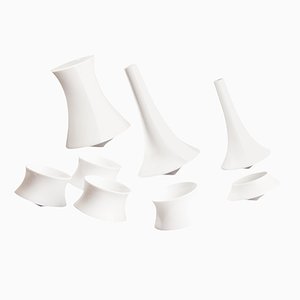My visit with Valladares and Villa Sené
Scenes from Havana: Part 1
“He says that la Habana is dark, is destroyed … but he loves it.” We are driving down Fifth Avenue, one of Havana’s main thoroughfares, listening to the radio. My companion, designer Luis Ramírez, is translating a Pablo Milanés song for me. Though total strangers until recently, we’ve been together for almost a week now, and we’re becoming more comfortable speaking in one another’s native languages. “He dies in Havana,” Luis says thoughtfully. “[Because] he loves Havana.”
Large homes in myriad architectural styles stand on either side of the wide, tree-lined street. During the ’50s, the city’s wealthiest families lived here in the Miramar neighbourhood, but in the years following the revolution, many of the homes were deserted or fell into disrepair. Recently, some have been restored to their former glory, in response to changing laws that have allowed more money to flow into Cuba from outside, as well as the possibility of both homeownership and entrepreneurship. Just as I think I have a grasp on the area, though, Luis points out a looming structure to our right; it’s massive and imposing, a spaceship of a building and a bizarre interruption to an otherwise residential site line. “That,” he laughs, “is the Soviet embassy. Mucho power, no?” Just moments later, we’re passing by a children’s playground.
Contradictions, big and small. That is what Havana has most consistently presented to me over the past five days. Every time I think I understand something, I get a little more information that reinforces, once again, the complexity of this city, this country. It is often beautiful, and frequently confusing.
As Cuban-American relations have begun to show signs of thawing, and the news cycles have granted more and more coverage to the small, culturally rich island-nation—geographically, just 90 miles from the coast of Florida but much more distant in so many other ways—I’ve grown increasingly curious about the state of design in Cuba. So, I decided to go find out for myself.
Because of Cuba’s isolation—the result of decades-long trade and travel embargoes and extremely limited global Internet access—and the fact that, for a very long time, few people have had money to spend on much beyond the necessities, little has been written on the topic of Cuban design, and communicating with those on the island from afar is often difficult. The World Wide Web is generally available only to those working in certain professions or those with enough cash to afford the small but growing number of connected Internet cafes or hotel business centers; an Intranet also exists in Cuba, though that is a national—as opposed to global—network. In my experience, this reality initially made even finding my design contacts—and, later, capturing any follow-up materials—an interesting challenge.
Thanks to Google, however, and a good dose of luck, I linked up with three remarkable, Havana-based individuals: Luis Ramírez, an accomplished furniture and interiors designer and the vice president of Caguayo, a foundation supporting Cuban arts; and husband-and-wife design team and magazine founders Sandra Fernández and Yorlán Cabezas Padrón. The three enthusiastically welcomed me to the city and introduced me to a number of impressive individuals who are driving forward Cuba’s larger creative scene.
What follows here are a series of episodes from that week, intended, collectively, to offer a taste of life in Havana’s design landscape today. In the face of ongoing, often thorny obstacles—excruciatingly limited materials and financial resources, restricted or opaque professional opportunities, and more—the individuals I met, though each unique in his or her goals and styles, all shared a dogged resourcefulness, a seemingly tireless work ethic, and a strong sense of community. Further, as opportunities for work slowly appear in parallel with evolving socio-political realities, there is a cautious optimism that the discipline of design will continue to find respect among both locals and the world at large. I was incredibly inspired; and hope you will be too.
It’s been a big year for upstart designers Raiko Valladares and José Antonio Villa Sené. The twenty-somethings—who met and began collaborating as students at Havana’s Higher Institute of Industrial Design (ISDI)—launched their first professional collaboration this past spring to great reception. The project, a collection of three chairs called Vibra (Vibration in English) made with every day, nylon clothesline, debuted at Fábrica de Arte Cubano, the city’s popular new multipurpose arts space. After the FAC exhibition, organizers for TEDxHabana, now in its second year, invited them to design the lobby for the November event, a high compliment as well as an opportunity for excellent exposure. And though they’ve only produced a small number of the Vibra pieces to date, they’ve already had enough orders to begin outsourcing their weaving work to artisans in the local community.
Sitting together with Valladares and Villa Sené in their studio—a narrow room inside a small but lovely two-story stucco house in Havana’s Miramar neighborhood—the pair are modest but visibly excited by the successes they’ve found in a relatively short time. It’s been a combination of good fortune and great effort. In addition to the work of designing and making, the pair has been slowly but surely promoting themselves online, an opportunity most Cuban designers go without. Valladares and Villa Sené are among the relatively lucky few with reliable home Internet access. Two large Mac monitors sit atop their shared desk, and they use these rare resources to their advantage, enhancing their marketing imagery, studying global design culture, contacting publishers like to Dezeen to showcase their work, and more. In this way, they are no different from most young designers around the world just starting out; they’ve got to do everything themselves. But the constant struggle against meagre materials, resources, and infrastructure is a major differentiator. So too is their conscious drive to uplift their country’s design culture and consolidate its design identity.
According to Valladares, “In the past, it was common to import and copy design and architecture from other countries. But there are great designers and architects in Cuba doing great things. We want to make our own designs here that are consumed by Cubans, to stop importing designers. I’d love to be able to own pieces by other Cuban designers.”
He goes on, “There are two types of Cuban designers. There are those who leave Cuba for other places and start making design abroad. Then there are those who stay. We decided to stay, so we must solve any problem that may arise—in terms of material availability or any other issue—and make attractive products that will be consumed here in Cuba. It’s more difficult to get things done in Cuba, and there are often a lot of sacrifices involved.” Once a project is finished, though, Valladares says, “You savor it more. In Cuba, the end product has a special flavor.”
Villa Sené agrees, adding that they are beginning to find more opportunities for work and clients: “There are more people who appreciate design here today. A lot of artists are coming here to live, and they are potential customers. At the same time, there are more Cubans traveling abroad, seeing designs and coming back and sharing what they’ve seen, comparing. And now that it’s possible to buy and sell homes in Cuba, those places need furniture. There’s also more interior design work; more restaurants are opening, and those places want interesting designs, not the customary plastic chair.” He laughs, then adds, “Maybe this is an old reality for other countries, but these are new phenomena for us in Cuba today.”
-
Text by
-
Anna Carnick
Anna is Pamono’s Managing Editor. Her writing has appeared in several arts and culture publications, and she's edited over 20 books. Anna loves celebrating great artists, and seriously enjoys a good picnic.
-





